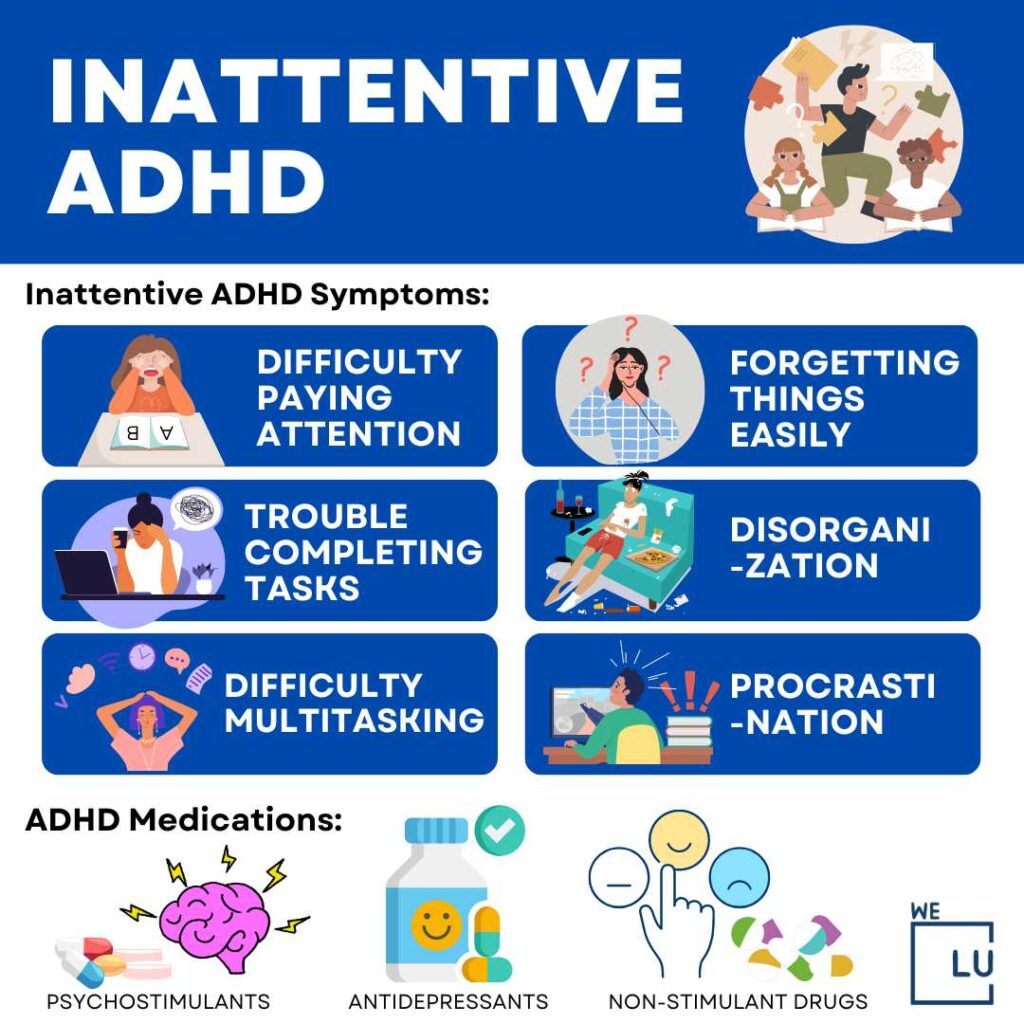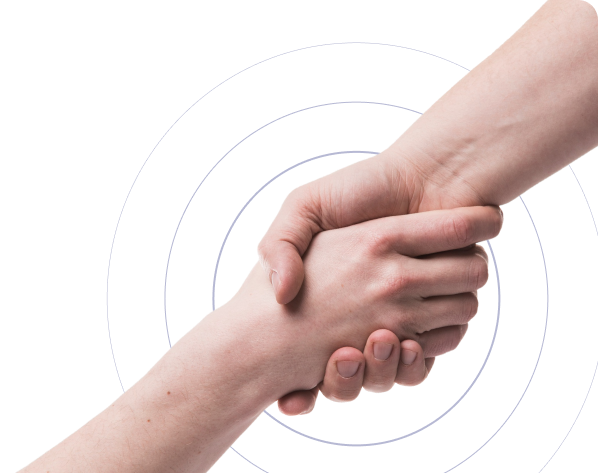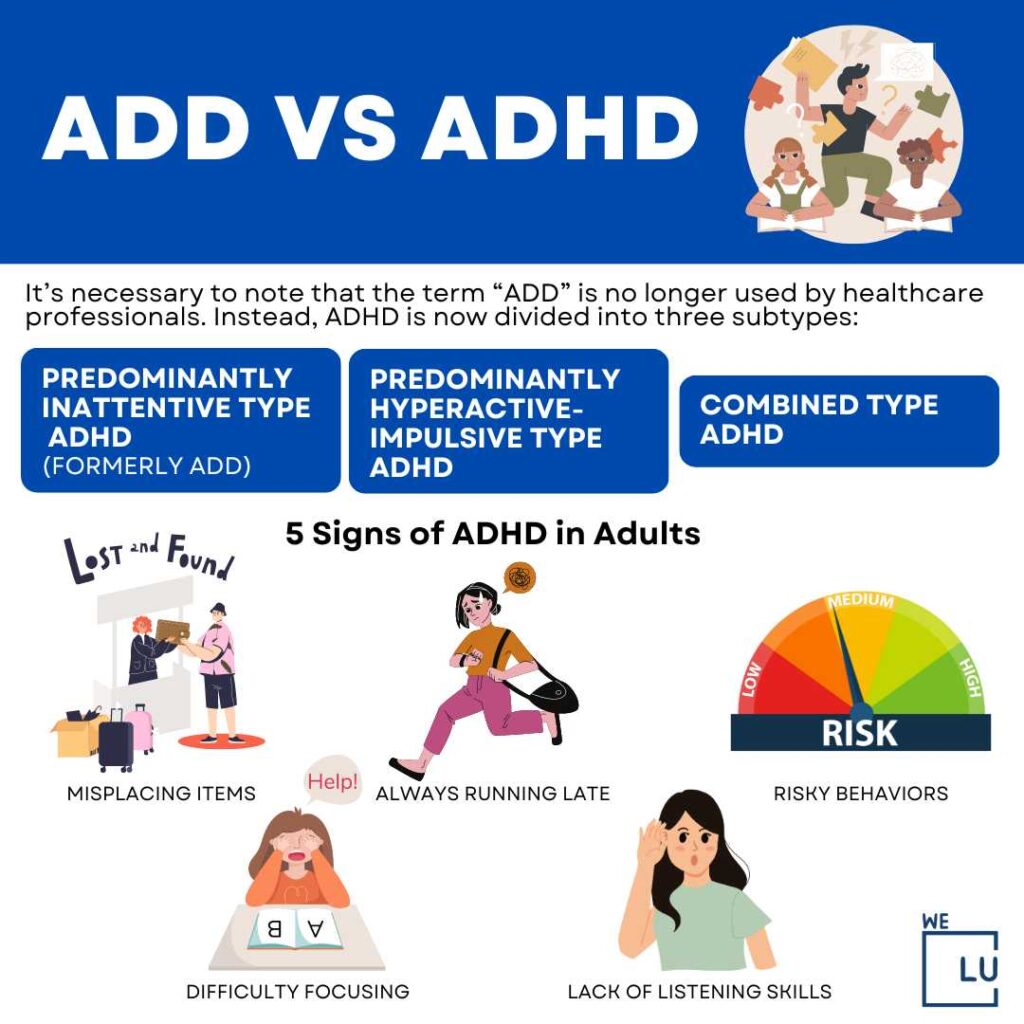ADHD Inattentive Type Overview
Attention-deficit/hyperactivity disorder (ADHD) is a complex neurodevelopmental condition that affects individuals of all ages. Within the realm of ADHD, there are subtypes, one of which is ADHD Inattentive Type. This subtype is characterized by difficulties sustaining attention, organizing tasks, and following through with instructions.
In this article, we will explore the symptoms associated with ADHD Inattentive Type, delve into the diagnosis process, and examine effective treatment options that can greatly improve the lives of those affected by this condition. By shedding light on these aspects, we aim to increase understanding and awareness of ADHD Inattentive Type, ultimately providing valuable insights for individuals, families, and healthcare professionals.
Inattentive Type ADHD
Inattentive Type ADHD, also known as ADHD Predominantly Inattentive Type, is a subtype of attention-deficit/hyperactivity disorder (ADHD). It is characterized primarily by symptoms related to inattention rather than hyperactivity and impulsivity. Individuals with this subtype often struggle with maintaining focus, organizing tasks, and following through with instructions or completing assignments. They may appear dreamy, forgetful, and easily distracted, significantly impacting their academic, occupational, and social functioning. Inattentive Type ADHD is typically diagnosed based on specific criteria outlined in diagnostic manuals, such as the Diagnostic and Statistical Manual of Mental Disorders (DSM-5). Effective treatment options, such as behavioral interventions and medication, can help manage the symptoms and improve daily functioning for individuals with this subtype of ADHD.
ADHD Inattentive Type Symptoms
ADHD Inattentive Type symptoms can manifest in various aspects of an individual’s life. Common symptoms include:
- Inattention: Difficulty sustaining focus, becoming easily distracted, and struggling to stay organized and complete tasks.
- Forgetfulness: Frequently forgetting appointments, deadlines, or important details.
- Poor organization: Difficulty organizing and managing belongings, time, and responsibilities.
- Lack of attention to detail: Making careless mistakes in schoolwork, work projects, or other activities.
- Difficulty listening: Struggling to pay attention during conversations, lectures, or instructions.
- Daydreaming: Frequently getting lost in thoughts and having difficulty engaging in activities.
- Difficulty following instructions: Struggling to understand and follow through with directions or guidelines.
- Avoid tasks requiring sustained mental effort: Engaging in activities requiring concentration and mental stamina is challenging.
- The trouble with time management: Difficulty estimating time accurately, resulting in procrastination or missed deadlines.
- Forgetfulness in daily activities: Forgetting to complete routine tasks, such as returning calls, running errands, or completing chores.


Skip To:
Learn More:
- Is ADHD Genetic? What You Should Know
- Is ADHD a Mental Illness? Revealing The Truth About ADHD
- 8 Ways to Overcome ADHD Paralysis, Symptoms, and Risks
- ADHD and Anxiety, Symptoms, Connections & Coping Mechanisms
- Attention-Deficit Hyperactivity Disorder (ADHD), Signs, Symptoms, Causes, Types & Treatments
ADHD Fact Sheet
Prevalence: ADHD is one of the most common neurodevelopmental disorders, affecting approximately 5-10% of children and 2-5% of adults worldwide. It is more commonly diagnosed in males than females.
Core Symptoms: The core symptoms of ADHD include inattention, hyperactivity, and impulsivity. Individuals with ADHD may struggle to sustain attention, organize tasks, follow instructions, sit still, and control impulses.
ADHD is categorized into three subtypes:
a. Predominantly Inattentive Presentation: Primarily characterized by difficulties with attention and organization.
b. Predominantly Hyperactive-Impulsive Presentation: Primarily characterized by hyperactivity and impulsivity.
c. Combined Presentation: Displays symptoms of both inattention and hyperactivity-impulsivity
Diagnosis of ADHD: This involves a comprehensive evaluation, including interviews with the individual, parents (for children), and teachers or other relevant observers. The Diagnostic and Statistical Manual of Mental Disorders (DSM-5) criteria are commonly used for diagnosis.
Long-Term Outlook: With appropriate diagnosis, treatment, and support, individuals with ADHD can lead fulfilling lives. Early intervention and ongoing management can significantly reduce the impact of symptoms and improve overall functioning.
Co-occurring Conditions: ADHD often coexists with other conditions such as learning disabilities, anxiety disorders, depression, oppositional defiant disorder (ODD), and conduct disorder (CD). These comorbidities can further complicate diagnosis and treatment.
End the Emotional Pain. Get Your Life Back.
Feeling Depressed, Anxious or Struggling with Mental Health Illness? Get Safe Comfortable Mental Health Dual Diagnosis High-Quality Therapy From Counselors That Care. Begin Your Recovery Now.
Hotline: (509) 348-4077

ADHD Statistics
Understanding the prevalence and impact of ADHD Inattentive Type is crucial in recognizing the scope of this condition and addressing the needs of those affected. This introduction will explore statistics related to ADHD Inattentive Type, shedding light on its prevalence, demographic patterns, and associated challenges. By delving into these statistics, we aim to enhance awareness and provide a foundation for further examination and discussion.
8.7 Million
In 2019, the number of visits to physician offices with attention deficit disorder as the primary diagnosis was 8.7 million.
Source: NIMH
9.5%
Approximately 9.5% of American adults, ages 18 and over, will suffer from a depressive illness (major depression, bipolar disorder, or dysthymia) each year.
Source: NIMH
70-80%
The heritability of ADHD, estimated to be around 70-80%, further supports the notion that genetic factors play a substantial role in its development.
Source: NIMH

ADHD Inattentive Type Adults
ADHD Inattentive Type is not limited to children and adolescents; it can persist into adulthood and impact individuals throughout their lives. The prevalence of ADHD Inattentive Type among adults is notable, and understanding its effects on this population is essential for proper recognition, diagnosis, and treatment.
While estimates vary, studies suggest that approximately 4-5% of adults may have ADHD Inattentive Type. However, it is important to note that this figure represents those formally diagnosed, and the actual number of adults affected may be higher due to underdiagnosis and lack of awareness.
In adults with ADHD Inattentive Type, symptoms often manifest as difficulties with organization, time management, sustaining focus, and completing tasks. They may struggle with maintaining employment, meeting deadlines, and managing personal relationships. Additionally, individuals with ADHD Inattentive Type may experience impulsivity, emotional regulation, and self-esteem challenges.
It is worth noting that ADHD Inattentive Type in adults can coexist with other mental health conditions such as anxiety, depression, and substance use disorders, further complicating its impact on overall functioning.
Recognizing the presence of ADHD Inattentive Type in adults is crucial for appropriate intervention and support. Seeking professional evaluation and diagnosis from qualified healthcare providers can help individuals understand and address their symptoms, improving their quality of life and managing daily challenges.
ADHD Inattentive and Distractible Type
ADHD Inattentive and Distractible Type refer to a subtype of attention-deficit/hyperactivity disorder (ADHD) that combines symptoms of both inattention and distractibility. While the Inattentive Type primarily exhibits difficulties with sustained attention and organization, the addition of distractibility further impacts an individual’s ability to concentrate and stay focused.
In this subtype, individuals may struggle with maintaining attention and be easily sidetracked or distracted by external stimuli. They may struggle to filter out irrelevant information, leading to increased distractibility and difficulty completing tasks. These symptoms can significantly affect academic performance, work productivity, and interpersonal relationships.
The presence of both inattention and distractibility can manifest in various ways. Individuals may have difficulty staying on task, frequently lose track of their thoughts, or have trouble ignoring environmental stimuli. They may exhibit a pattern of starting multiple activities without completing them, often jumping from one task to another.
It’s important to note that ADHD Inattentive and Distractible Type falls within the broader spectrum of ADHD and can occur in children and adults. Proper diagnosis by a qualified healthcare professional is crucial to determine the appropriate subtype and develop an effective treatment plan. Interventions may include a combination of behavioral strategies, psychoeducation, and, in some cases, medication to manage symptoms and enhance overall functioning.
Get Help. Get Better. Get Your Life Back.
Searching for Accredited Dual Diagnosis Mental Health Centers Near You?
Even if therapy failed previously, or are in the middle of a difficult crisis, we stand ready to support you. Our trusted behavioral health specialists will not give up on you. When you feel ready or just want someone to speak to about counseling alternatives to change your life call us. Even if we cannot assist you, we will lead you to wherever you can get support. There is no obligation. Call our hotline today.
FREE 24/7 Dual Diagnosis Mental Health Services HotlineADHD Predominantly Inattentive Type
ADHD Predominantly Inattentive Type, also known as ADHD-PI, is a specific subtype of attention-deficit/hyperactivity disorder (ADHD). Prominent symptoms of inattention characterize it, while hyperactivity and impulsivity may be less evident compared to other ADHD subtypes.
Individuals with ADHD Predominantly Inattentive Type, often struggle with maintaining focus, sustaining attention, and organizing tasks. They may have difficulty staying engaged in activities requiring mental effort, such as schoolwork, work projects, or even leisure activities. Common symptoms include:
- Inattention: Persistent difficulty sustaining attention, becoming easily distracted, and making careless mistakes.
- Disorganization: Challenges with organizing tasks, managing time, and completing assignments or projects.
- Forgetfulness: Frequently forgetting important details, appointments, or obligations.
- Poor attention to detail: Making errors due to overlooking or disregarding important information.
- Daydreaming: Frequently appearing “lost in thought” or distracted by internal stimuli.
- Difficulty following instructions: Struggling to understand and carry out instructions or directions.
- Avoidance of tasks requiring sustained mental effort: Engaging in tasks that demand concentration and attention over time is challenging.
- The trouble with organization and planning: Difficulty keeping track of personal belongings, time management, and planning.
It is important to note that individuals with ADHD, Predominantly Inattentive Type, may still experience some level of hyperactivity or impulsivity. Still, it is less pronounced compared to other ADHD subtypes.
Proper diagnosis by a qualified healthcare professional is necessary to differentiate ADHD, Predominantly Inattentive Type, from other conditions and to develop an appropriate treatment plan. Interventions may include a combination of behavioral strategies, accommodations, psychoeducation, and, in some cases, medication to help manage symptoms and improve daily functioning.
First-class Facilities & Amenities
World-class High-Quality Mental Health Services & Behaviroal Health Substance Abuse Treatment
Rehab Centers TourRenowned Mental Health Centers. Serene Private Facilities. Inpatient Rehab Programs Vary.
Mental Health Helpline: (509) 348-4077Proven recovery success experience, backed by a Team w/ History of:
15+
Years of Unified Experience
100s
5-Star Reviews Across Our Centers
10K
Recovery Success Stories Across Our Network
- Low Patient to Therapist Ratio
- Comprehensive Dual-Diagnosis Treatment
- Complimentary Family & Alumni Programs
- Coaching, Recovery & Development Events
- Comfortable Onsite Medical Detox Center
ADHD Inattentive Type Medication
Medication can be an important component of the treatment plan for individuals with ADHD Inattentive Type. While it is essential to consult with a healthcare professional for a comprehensive evaluation and personalized recommendations, several medications are commonly used to manage the symptoms of ADHD Inattentive Type. The most commonly prescribed medications include:
- Stimulant Medications: Stimulants, such as methylphenidate (e.g., Ritalin, Concerta) and amphetamine-based medications (e.g., Adderall, Vyvanse), are often prescribed for ADHD. These medications can help improve focus, attention, and impulse control.
- Non-Stimulant Medications: Non-stimulant medications, such as atomoxetine (Strattera) and certain antidepressants (e.g., bupropion), may be recommended for individuals who do not respond well to or cannot tolerate stimulant medications. These medications work differently from stimulants and can help manage ADHD symptoms.
Medication is not the only approach to managing ADHD Inattentive Type. It is often combined with other interventions, such as behavioral therapy, counseling, education, and lifestyle modifications.
The choice of medication and dosage will depend on several factors, including the individual’s specific symptoms, medical history, and response to previous treatments. Regular monitoring and close communication with a healthcare professional are crucial to ensure optimal medication effectiveness and minimize potential side effects.
It is essential to follow the prescribed treatment plan, including medication dosages and scheduling, and to communicate any concerns or changes in symptoms to the healthcare provider.
World-class, Accredited, 5-Star Reviewed, Effective Mental Health Dual Diagnosis Programs. Complete Integrated Inpatient Rehab with Free Post Discharge Therapy Planning.
Hotline: (509) 348-4077End the Emotional Pain Rollercoaster. Gain Stability & Happiness Through Recovery Treatment. Start Mental Health Counseling Today. Get Free No-obligation Guidance by Behaviroal Health Specialists Who Understand Mental Health Recovery.
ADHD Inattentive Type Treatment at We Level Up Washington Behavioral Health Center
Treating ADHD Inattentive Type typically involves a multimodal approach that combines various strategies to address the symptoms and challenges associated with the condition. While treatment plans should be individualized and tailored to each person’s specific needs, some common components of ADHD Inattentive Type treatment include:
- Behavioral Therapy: Behavioral interventions, such as cognitive-behavioral therapy (CBT), can help individuals develop strategies to improve focus, organization, time management, and problem-solving skills. This type of therapy also addresses emotional regulation and coping mechanisms.
- Psychoeducation: Education about ADHD Inattentive Type can provide individuals, and their families better understand the condition, its impact, and strategies for managing symptoms. Psychoeducation can help individuals develop self-awareness, self-advocacy skills, and a sense of empowerment.
- Accommodations and Supportive Measures: Implementing accommodations in academic or work settings can provide individuals with ADHD Inattentive Type the necessary support to thrive. These may include extended time for assignments or exams, organizational aids, and preferential seating to minimize distractions.
- Medication: Medication, such as stimulant or non-stimulant medications, may be prescribed by a healthcare professional to manage symptoms of ADHD Inattentive Type. These medications can help improve attention, focus, and impulse control. I
- Lifestyle Modifications: Healthy lifestyle habits, such as regular exercise, sufficient sleep, a balanced diet, and stress management techniques, can have a positive impact on ADHD symptoms. These lifestyle modifications can help optimize overall well-being and improve attention and concentration.
- Support Networks: Building a strong support network, including family, friends, and support groups, can provide emotional support, understanding, and encouragement. Peer support groups or counseling can particularly benefit individuals with ADHD Inattentive Type.
Work with a healthcare professional experienced in ADHD to develop an individualized treatment plan. Combining various treatment modalities and continuously monitoring progress can improve symptom management and enhance the quality of life for individuals with ADHD Inattentive Type.
Popular ADHD Inattentive Type FAQs
-
What is ADHD inattentive type?
ADHD Inattentive Type, also known as ADHD Predominantly Inattentive Type, is a specific subtype of attention-deficit/hyperactivity disorder (ADHD).
-
What is ADHD inattentive type in women?
Symptoms can manifest differently in women compared to men, often with less noticeable hyperactivity and impulsivity. Women with ADHD may experience difficulties with sustaining attention, organizing tasks, managing time, and staying focused.
-
What is ADHD inattentive type treatment?
ADHD Inattentive Type treatment may include behavioral therapy, medication, accommodations, psychoeducation, lifestyle modifications, and support networks.
-
What is ADHD symptoms inattentive type?
Individuals with ADHD Inattentive Type may struggle with maintaining focus, completing tasks, and staying organized in various aspects of their lives, such as school, work, and personal relationships.
Watch How to Improve Mental Health? 8 Steps & Tips for Maintaining Your Mental Wellbeing. Find Top Mental Health Tips & Anxiety Tips Advice from a Therapist.
Experience Transformative Recovery at the We Level Up Treatment Center.
See our authentic success stories. Get inspired.
Get the help you deserve.



Start a New Life
Begin with a free call to a behavioral health treatment advisor. Learn more about our dual-diagnosis programs. The We Level Up treatment center network delivers recovery programs that vary by each treatment facility. Call to learn more.
- Personalized Care
- Caring Accountable Staff
- World-class Amenities
- Licensed & Accredited
- Renowned w/ 5-Star Reviews
We’ll Call You
Search We Level Up WA Mental Health ADHD Inattentive Type Topics & Resources
Sources
[1] What is ADHD? | CDC Examining ADD vs ADHD Learn More: ADHD Inattentive Type
[2] NIMH » Mental Illness (nih.gov) ADD vs ADHD Review Learn More: ADHD Inattentive Type
[3] NIMH » Attention-Deficit/Hyperactivity Disorder (ADHD) (nih.gov) Learn More: ADHD Inattentive Type
[4] Attention Deficit Hyperactivity Disorder – StatPearls – NCBI Bookshelf (nih.gov) ADD vs ADHD Adults Review. Learn More: ADHD Inattentive Type
[5] ADHD: Reviewing the Causes and Evaluating Solutions – PMC (nih.gov) ADD vs ADHD in Adults Causes. Learn More: ADHD Inattentive Type
[6] What is mental health? Evidence towards a new definition from a mixed methods multidisciplinary, international survey – PMC (nih.gov) ADD vs ADHD Symptoms Learn More: ADHD Inattentive Type
[7] COMMON MENTAL HEALTH DISORDERS – Common Mental Health Disorders – NCBI Bookshelf (nih.gov) ADD vs ADHD in Female Adults Learn More: ADHD Inattentive Type
[8] About Mental Health (cdc.gov) Learn More: ADHD Inattentive Type
[9] Information about Mental Illness and the Brain – NIH Curriculum Supplement Series – NCBI Bookshelf Learn More: ADHD Inattentive Type
[10] Effective Mood And Personality Disorder Treatment (welevelupnj.com) Learn More: ADHD Inattentive Type